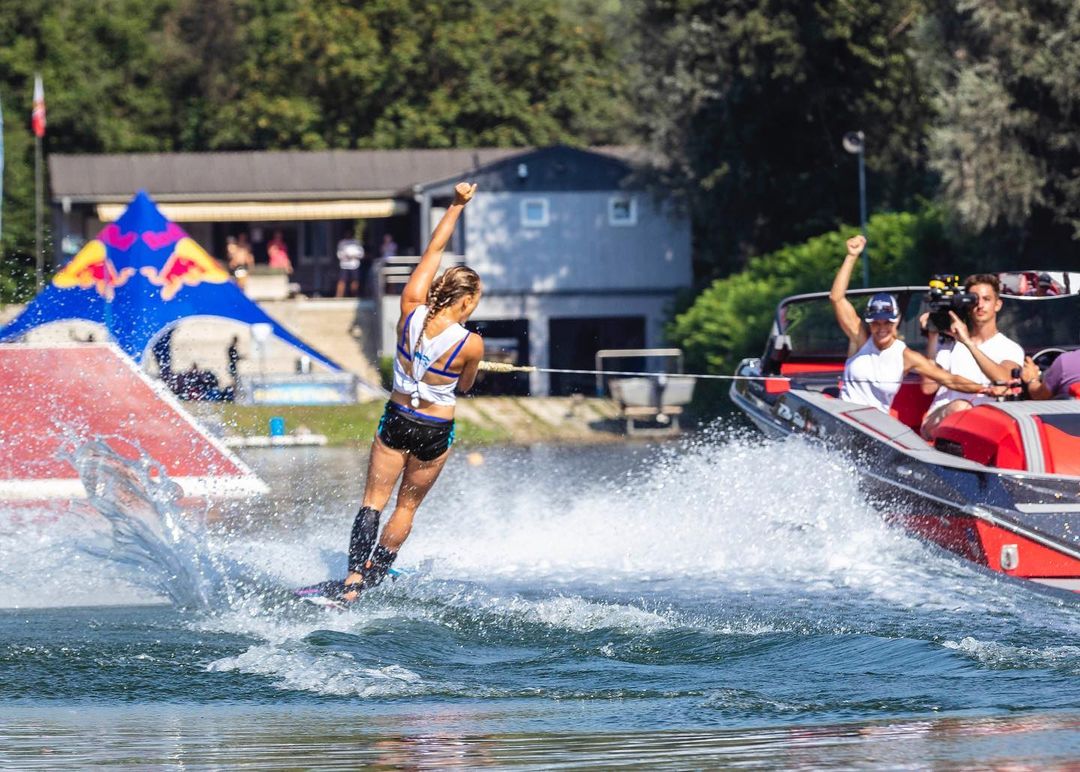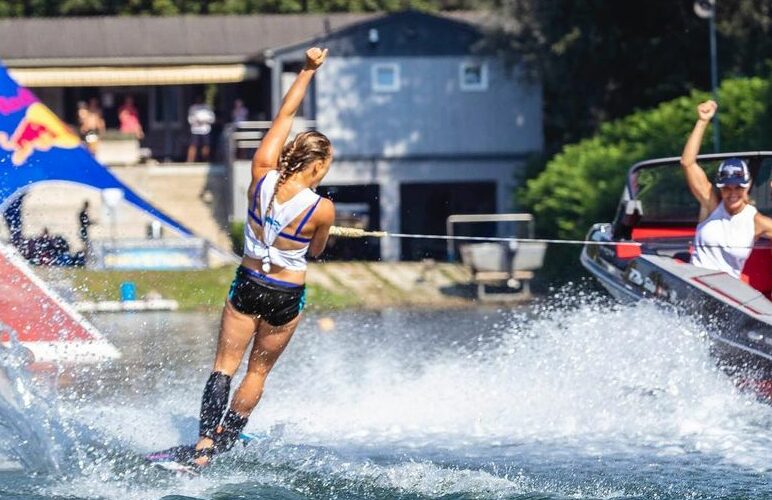WWS Overall Tour: Cancellations Highlight Ongoing Issues in Women’s Professional Water Skiing

Giannina Bonnemann Mechler, 2023 WWS Overall Tour champion, will not be competing in 2024 as she and her husband Dane expect their first child in August (image: @world.water.skiers)
By Jack Burden
Last September, the world’s best female overall skiers, past and present, gathered in Central Florida for the WWS Overall Tour final. Regina Jaquess, widely considered the GOAT of women’s slalom and overall, competed alongside Hanna Straltsova, who would go on to win dual World Championship golds a month later, and Giannina Bonnemann Mechler, who had swept the previous three tour stops. In a fiercely contested final with less than 60 overall points separating the top three (roughly three buoys in slalom), Bonnemann Mechler emerged victorious, going undefeated on the Tour. Sadly, we will not witness the women battle it out again in 2024.
Despite months of planning and communication with the athletes, World Water Skiers has made the difficult decision to cancel the women’s event due to an insufficient number of entries across the four-stop Tour in 2024. “Just really disappointed,” shared Tour organizer Jaret Llewellyn. “We continue to get great support from the men, but, unfortunately, the state of the sport makes being a professional athlete unattainable [for most].”
Instead, the Tour will move forward in 2024 as a male-only competition, where a core group of six of the best overall skiers in the world will travel to three countries alongside a rotating cast of local challengers. The cancellation of the women’s event is a significant blow and speaks to larger issues around participation and gender equity in the sport.
Water skiing, much like other professional sports, has made significant strides toward achieving gender equity in recent years. This year, an impressive 13 out of 15 slalom events and all five professional trick events offered equal prize money for men and women. This commitment to equality has resulted in the largest total prize purse for women’s slalom in the past 20 years, potentially the highest ever recorded.
Despite these positive developments, there remains a notable disparity in participation rates between male and female athletes in professional competition. Across the first nine professional slalom tournaments of 2024, all of which featured equal prize money, male participants have outnumbered female participants by almost two to one.
Professional events rely on athlete participation, whether directly through entry fees, or in the case of the WWS Overall Tour, to justify their value proposition to sponsors. If the women’s side of the field is consistently light, more tournament organizers might follow suit, jeopardizing the recent gains in gender equity.
So how do we increase female participation at professional events? The ‘host it and they will come’ strategy appears to be failing.
A simple answer could be that pay equity in professional water skiing is still a relatively new development. It may take time for this change to encourage more female athletes to pursue water skiing at the highest level. The visibility of equal prize money could gradually attract more women to stay in the sport past the junior ranks as they see professional water skiing as a viable career option.
Unfortunately, the reality is that despite the recent proliferation of professional events and the growth in prize money, the sport can still only support a very limited pool of truly ‘professional’ athletes, defined as individuals who can sustain themselves primarily off prize money and sponsorship.
Beyond prize money, other financial factors come into play. Industry support and sponsorship opportunities skew heavily male. Boat manufacturers sponsor over 40% more male water skiers than female, and among major ski manufacturers, the ratio of ‘team’ skiers is four-to-one male. These disparities illustrate the challenges faced by female athletes wanting to join the professional circuit.
The larger challenge may have to do with female participation across all levels of the sport. Amateur tournament participation is heavily male-dominated, although most of this is driven by the senior divisions. Women make up approximately 40% of tournament participants under 30, which is significantly better than many sports, particularly outdoor sports, which are notoriously seen as ‘boys’ clubs.’
This is encouraging, but there is clearly room for improvement. Water skiing is championed as a family sport and, at its best, is a beautiful way to bring mothers, sons, fathers, and daughters together on the water. But to meet this goal, we must foster a culture that encourages female participation.
Some of this is circular too. Having visible role models and mentors on the professional circuit can inspire more young girls to pursue water skiing. Successful female athletes can play a crucial role in mentoring and motivating the next generation.
Sadly, there will be no platform for the world’s best female overall skiers in 2024. A confluence of injuries, work commitments, major life events, scheduling conflicts, and financial pressures have coincided to deprive us of showcasing these important role models. Without greater support for women’s skiing across all levels of the sport, this could be the start of a worrying trend. Hopefully, it turns out to be just a speed bump on the road to success.

